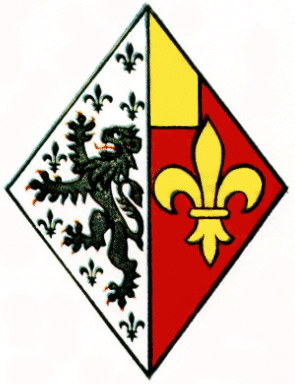How Arms were displayed

There were various shapes used when recreating the shield from the coat of arms. The shape has no heraldic significance so this gave some latitude to artists rendering a reproduction of a particular coat of arms. The sole exception to this rule was for unmarried ladies who by convention displayed their shield framed in a lozenge or diamond design. The reason behind this was that women did not bear their shields in battle. The queen of England was the one exception to this rule and the Royal Arms of England were never displayed in lozenge form. Women were not granted their own coat of arms but used their fathers arms until they married. After marriage a lady would display her fathers arms on one half of the shield and her husbands arms on the other half, this enabled coats of arms of men with no sons to live on.



